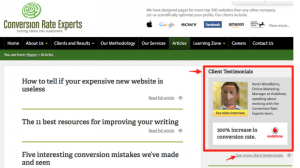By Featured
Riding on rapid tech development, the world of work is swelling to new heights. Traditional employee expectations are dissolving, replaced by a more fluid and dynamic landscape. With these seismic shifts, teammates are demanding greater autonomy, flexibility, and growth opportunities to match burgeoning responsibilities. Leaders, in turn, are challenged to adapt their leadership styles to empower and support their teams throughout these waves of change.
Below, we gathered 12 key perspectives that offer insight into what employees need from management. It draws on lived experiences from career coaches, CEOs, and other thought leaders to offer practical recommendations. From fostering a sense of connection with all employees, regardless of position, to prioritizing a sense of trust over performance, this article provides a road map of techniques and visions for navigating this complex terrain.
Effort for reconnection
Beyond the need for leaders to be transparent, authentic, and empathetic, employees are requesting more visibility from leaders. Hybrid working environments have isolated some executives from employees, and I often coach leaders on ways to reconnect. Reconnecting might include more in-person visits, town hall meetings, video updates, skip-level coffee chats, or learning circles.
Beyond the typical culture surveys, people like to have a sense of knowing their leaders and having a hand in creating the vision and strategic direction of the organizations they support. Creating familiarity and listening to opinions creates frontline engagement and happier working relationships.
Angela Love, leadership coach, The Daymark Group
Bridge for executive-employee gap
It is becoming increasingly clear that there is a disconnect between executive leaders and entry-to-mid-level employees. This disconnect is often rooted in a need for a greater understanding of how organizations work and how each individual plays a role in growth.
Most entry-to-mid-level employees may require more support in fully grasping an organization’s financial health needs for long-term sustainability. They may need guidance in understanding why, for example, they won’t obtain a promotion despite individual solid performance within a year when the economy could be better and the organization has navigated significant layoffs.
Executive leaders must be more intentional in communicating the business process (why one exists), KPIs (core goals for success), and culture (inner workings and dynamics) to create a transparent and accountable organization.
They must also be mindful of generational shifts and varying values around work and life.
Chelsea C. Williams, founder and CEO, Reimagine Talent Co.
Collaborative leadership
The real winners in leadership create space for discussion and exploration, ditching the “my way or the highway” mindset. This means being open-minded, actively engaging with the team, and recognizing that leaders don’t always have all the answers. Asking a ton of questions and actually listening—that’s the key.
To improve employee satisfaction, culture, and ultimately your bottom line, teach everyone to be a leader from wherever they sit. Encourage them to set and maintain their own boundaries, even with you. Engage in conversations with your team members, and get their take on what they expect from executive leadership. It’s not about handing down expectations; it’s about creating them together.
People can’t give you what you want if they don’t know what it is, so be clear and upfront about expectations and allow room for people to ask questions along the way without feeling like they will be judged for not having all the answers.
Heather Vickery, CEO and Founder, Transformation and Leadership Coach, Vickery and Co
Model resilience and career path
I have learned from my leadership coaching clients that they expect their leaders to model resilience and have courageous career conversations. Resilient leaders are clear about their expectations and follow through, but also model career and life alignment. It is not helpful for employees if their leader does not “walk their talk.”
Too many employees are still going down the burnout escalator from lack of trust and honest communication, causing poor connection and engagement. Leaders need to have open career development conversations with their employees. Leaders need to share resources to help their employees grow professionally.
This might include budgeting for memberships to professional organizations or trainings relevant to their field, providing internal team-building activities to improve trust or connection, and giving interested employees additional responsibilities that can advance their skills and possibly lead to new, innovative opportunities to enhance engagement.
Beth Kennedy, Leadership Coach, TEDx Speaker and Trainer, Benatti Leadership Development
Flexibility adopting new modes of work
Employees want leaders to prioritize employee needs above outdated modes of work. With professionals everywhere collectively pushing back against employers trying to force them back to the office, it’s clear that what might have been a fair expectation at one point has shifted. Employees now expect leaders to adjust to the new norm rather than taking away the flexible work that has helped them rebalance work and life priorities.
Without proving a real need for employees to return to the office, leaders risk alienating and losing their most valuable team members. Employers are expected to find compromises rather than imposing rules and expecting employees to adjust.
Robert Kaskel, chief people officer, Checkr
Accountability in creating safe spaces
As our society continues to diversify, employees from marginalized backgrounds expect their leaders to model inclusive behaviors. They also expect leaders to hold one another accountable when someone is not rising to the occasion.
Based on what I’ve seen and heard as a diversity, equity, and inclusion consultant, one of the biggest barriers to change is the power differential. Employees may not speak up out of fear of retaliation, which makes it hard for leaders to collect honest, actionable feedback. Additionally, some organizations don’t have tangible mechanisms for accountability when leaders exhibit toxic and non-inclusive behavior.
Leaders who strive to be more inclusive can start by creating psychologically safe spaces for employees to provide honest feedback, such as anonymous surveys or focus groups led by a skilled facilitator. Organizations can use this to help develop new, inclusion-focused leadership competencies to hold all leaders to the same performance standards.
Alex Lahmeyer, founder and DEI consultant, Boundless Arc
Secure self-awareness and attachment style
The reception of and consequent response to negative feedback is a good summary of whether or not a leader has done the internal work of self-awareness and self-examination. It also reveals a leader’s “attachment style”—secure, avoidant, anxious, or disorganized—which is a psychological concept that describes patterns of how people act in response to interpersonal interactions.
Well-examined leaders with secure attachment styles, those who are confident in their position, skills, and external respect from their employees, won’t jump to “fight or flight” responses when faced with critique or alternative views. On the other hand, leaders with insecure attachment styles, who are less stable in their own knowledge or performance, will jump to a threat response, such as anger, denial, or accusation.
Leaders can seek to develop a secure attachment style through self-work, such as therapy, executive coaching, workshops, and business mentorship.
Willow Sipling, SHRM-PMQ, senior people strategy partner, University of Notre Dame
Authentic human connection
Being treated with respect and trust goes a long way. Genuine human connection matters to employees, as my research has shown. When an employer goes above and beyond the checklist of what they “need” to provide employees, the rewards are plentiful.
Surveys, questionnaires, procedures, and policies are important, but they do not replace the value of authentic human connection. Employees who are given the opportunity to live their whole lives authentically, while being given guidance, recognition, and encouragement, are more likely to reciprocate with loyalty and hard work. They are also more likely to have a stronger sense of well-being, which impacts productivity.
Leaders should use the Triple-A approach—Aim, Action, and Awareness—which offers a comprehensive strategy for transforming workplace culture by identifying the overall aim of the organization, gaining relevant and meaningful awareness of current workplace and employee needs, and then taking relevant action as leaders.
Tiffany De Sousa Machado, PhD, head of Wellbeing, lecturer, speaker, The Village Foundation
Situational awareness
As I build executive teams, I’ve noticed something striking: leaders’ assumptions about what their team needs from them often miss the mark.
Leaders tend to think employees prioritize financial rewards and career progression, but what teams look to them for is often something more profound, something different.
I always advise executives to bridge this gap with adaptive leadership—a dynamic approach that tunes into the team’s evolving needs. Situational awareness helps a leader be cognizant not just of the “what” and “how” of management but also the “when” and “why.”
To truly excel at this kind of perceptive, aware leadership requires actively seeking and attentively listening to employee input. Establishing robust feedback channels and fostering a culture of open honesty assures employees that their insights are vital in shaping the organization’s culture and future.
Michael Morgan, managing director, Medallion Partners
Emotional intelligence and empathy
In my experience, employees often expect their leaders to be not just decision-makers but also empathetic listeners. A less obvious expectation I’ve noticed is the desire for genuine understanding and emotional depth in leadership.
Employees value when leaders truly understand and respect their feelings and challenges, rather than blindly executing business strategies. One piece of advice for leaders is to sharpen their skills in empathy and emotional intelligence.
This involves understanding both their own emotions and also being genuinely attentive to their team’s emotional dynamics, balance, and harmony. Integrating this approach can transform an organizational culture by fostering a more supportive, enriching, and satisfying work environment.
Bayu Prihandito, certified psychology expert, life coach, founder, Life Architekture
Proficiency in DEI
Executives don’t just set business priorities, they are also drivers of company culture, for better or for worse. Especially for new and startup executives, their sheer gravitational force as a C-suite member can be an adjustment—this is an entirely different type of leadership than being a star individual contributor or a capable team manager, since the entire organization, including those who don’t know you well, are impacted by how you communicate to others and carry yourself in company spaces.
As companies and leaders build a strategy around executive leadership competencies, they should invest in building their communication skills and emotional intelligence—the absence of which can lead to unnecessarily fraught interactions. Leaders should also have expectations around how to understand, talk about, and ultimately champion diversity, equity, and inclusion initiatives, as employees are increasingly expecting conversance in DEI as a baseline skill for their executives.

Joshua De Leon, senior consultant, DEI, Peoplism
Focus on trust
The biggest thing I have learned is that high performance is not nearly enough when running a company.
A high performer who needs to be coached on working well with others breeds a lack of trust and a negative culture. In the military, they look for high-trust individuals over high-performance individuals daily. I did not know this early in my career. You want leaders and to breed leaders.
When you lead a new organization, you must instill the importance of high character and high trust in performance. It sounds backward, but it will pay off when you do this.
If you had the choice, a good leader can always teach a timid, low performer how to win, but you can rarely teach low-trust people. Ultimately, if you have a high performer but they are toxic employees or leveraging these performances against a good culture, it’s not worth having them on your team.
So that’s the biggest lesson to have a team culture: we win together and are there for each other.
Richard Laver, founder and CEO, LUCKY F*CK Energy Drink
(9)









